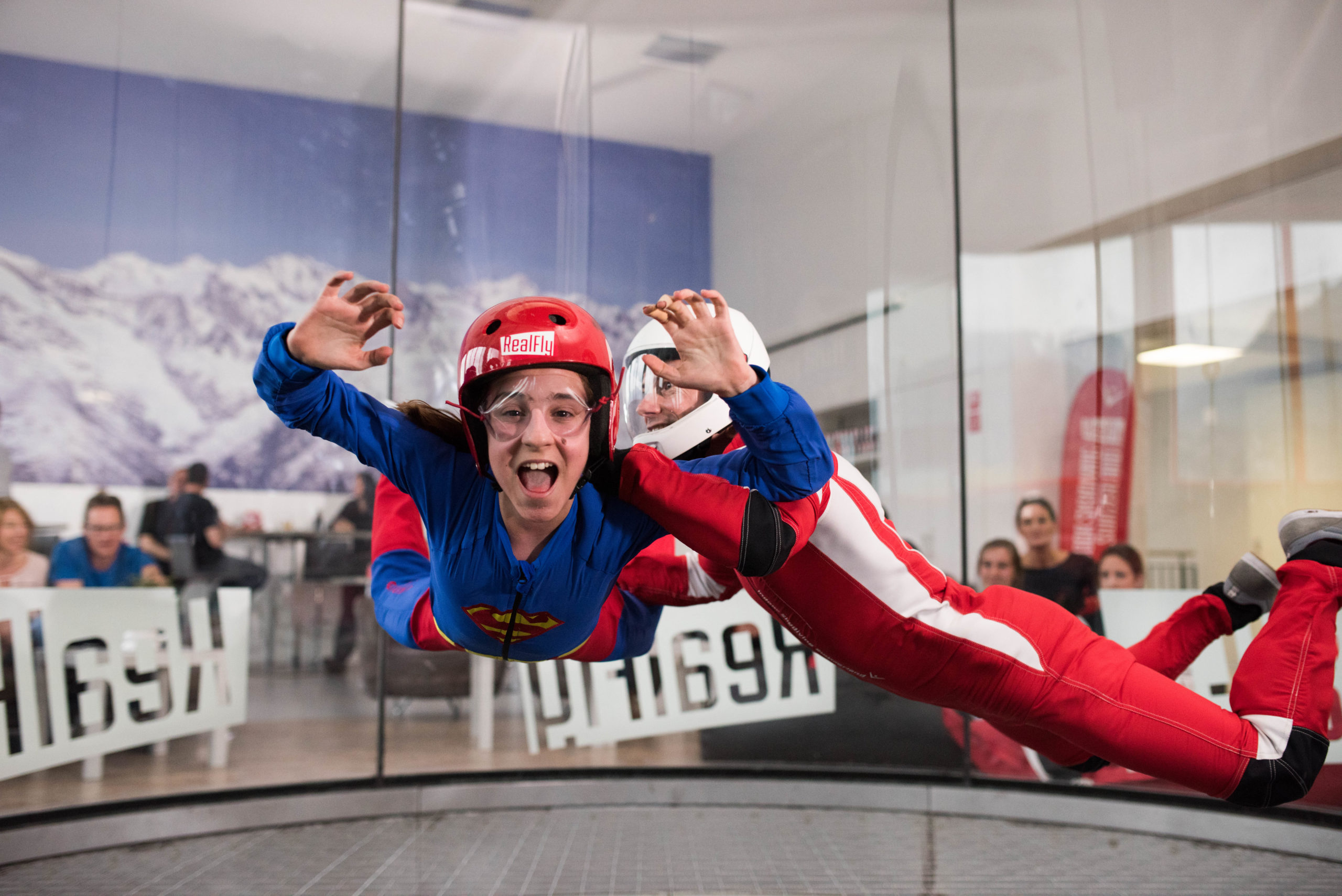Welcome to the continuation of our exploration of the fascinating history of skydiving. In our previous article, we delved into the origins of skydiving in Switzerland, from the first daring attempts to the first parachute jumps from hot-air balloons. If you haven’t read it yet, we invite you to do so.
Today we take a look at indoor skydiving, an exciting facet of this discipline. This modern variant of freefall has its own historical roots and has developed into a unique experience. We’ll explore the specifics of indoor skydiving and the technical and material aspects that underpin it.
The origins of indoor skydiving
Indoor skydiving was born of major technological advances in aerodynamics and vertical wind tunnels. Vertical wind tunnels are installations that generate a powerful upward flow of air, allowing participants to float in weightlessness. The idea of creating a controlled indoor environment to simulate the sensation of free fall emerged relatively recently.
The first vertical wind tunnels
The first vertical wind tunnel was created in the 1960s, paving the way for indoor skydiving as we know it today. These early wind tunnels were mainly used for aeronautical and military research purposes.
However, over time, visionary entrepreneurs saw the potential of these wind tunnels to offer a free-fall experience accessible to the general public. This is how the first commercial vertical wind tunnels came into being.
The first commercial vertical wind tunnel opened in 1982 in Las Vegas, and a sports wind tunnel was created in Orlando, Florida, a few years later.
Evolution of vertical wind tunnels
At the dawn of the 21st century, the development of wind tunnels intensified, then exploded at the end of the 2000s.
Over the decades, vertical wind tunnels have evolved, becoming more powerful and sophisticated. This has enabled indoor skydiving enthusiasts to enjoy an increasingly realistic and immersive experience. The first commercial wind tunnels were relatively rudimentary, but modern technology has transformed them into state-of-the-art free-fall simulators.
More powerful fans, transparent glass walls and advanced safety systems have helped to create a safe and exciting environment for indoor skydivers. Today, vertical wind tunnels are available worldwide, offering a unique opportunity to float in the air without having to jump out of a plane or hot-air balloon.
The evolution of equipment
Indoor skydiving has also seen an evolution in the equipment used. Flying suits, helmets and goggles are designed to offer comfort and safety to participants. In addition, qualified coaches and instructors play an essential role in the experience and teaching of flight techniques in the wind tunnel.
The sport
Indoor skydiving is much more than a simple attraction. It’s a discipline in its own right, with its own disciplines, rules and competitions. Indoor skydivers train to perform impressive acrobatic tricks, synchronised team sequences and much more. It’s a world where the art of weightless flying reaches new heights.
Conclusion
Indoor skydiving is much more than a simple technological innovation. It’s a story of ingenuity, passion and adventure. If you have the opportunity to experience this unique sensation, don’t hesitate to take the plunge. Indoor flying is an incredible opportunity to defy gravity and realise the dream of flying like a bird, sheltered from the elements, in a controlled and safe environment.
If you’d like to find out more, or if you’re ready to give it a go, don’t hesitate to book a flight with RealFly. We would be delighted to welcome you to our vertical wind tunnel in Sion, Valais, Switzerland, for an unforgettable indoor skydiving experience.
To discover more exciting aspects of the world of freefall, keep exploring our blog.


